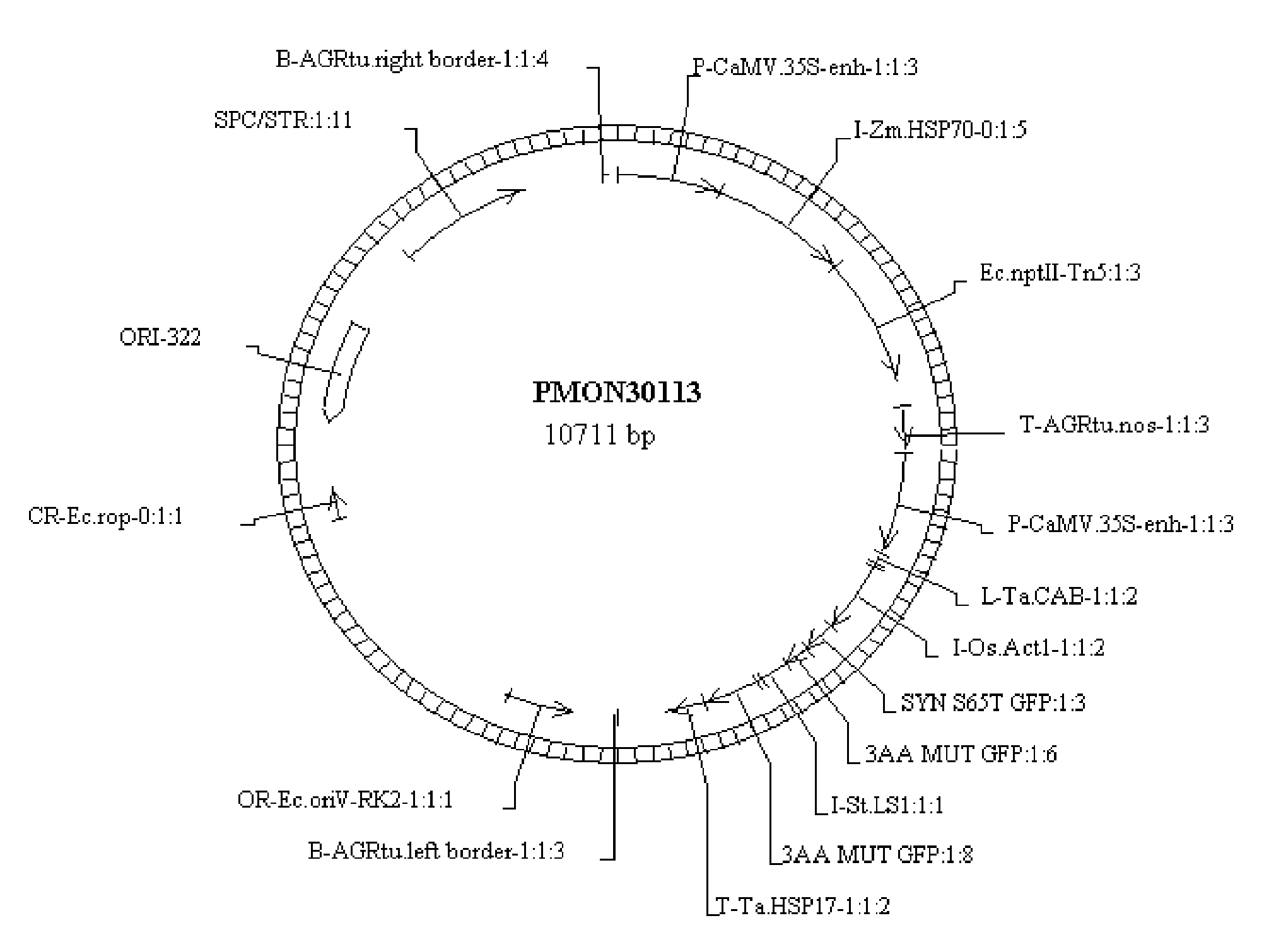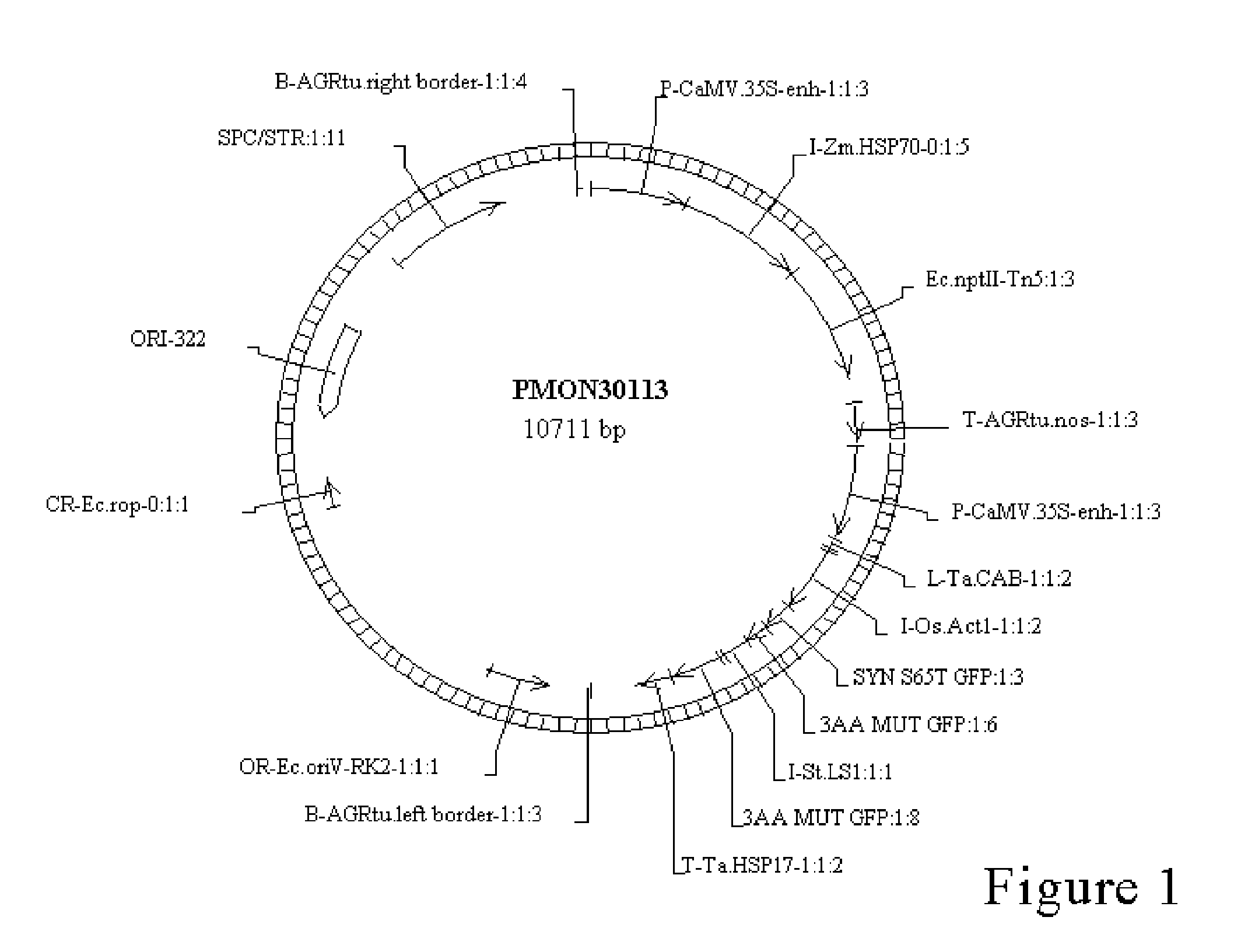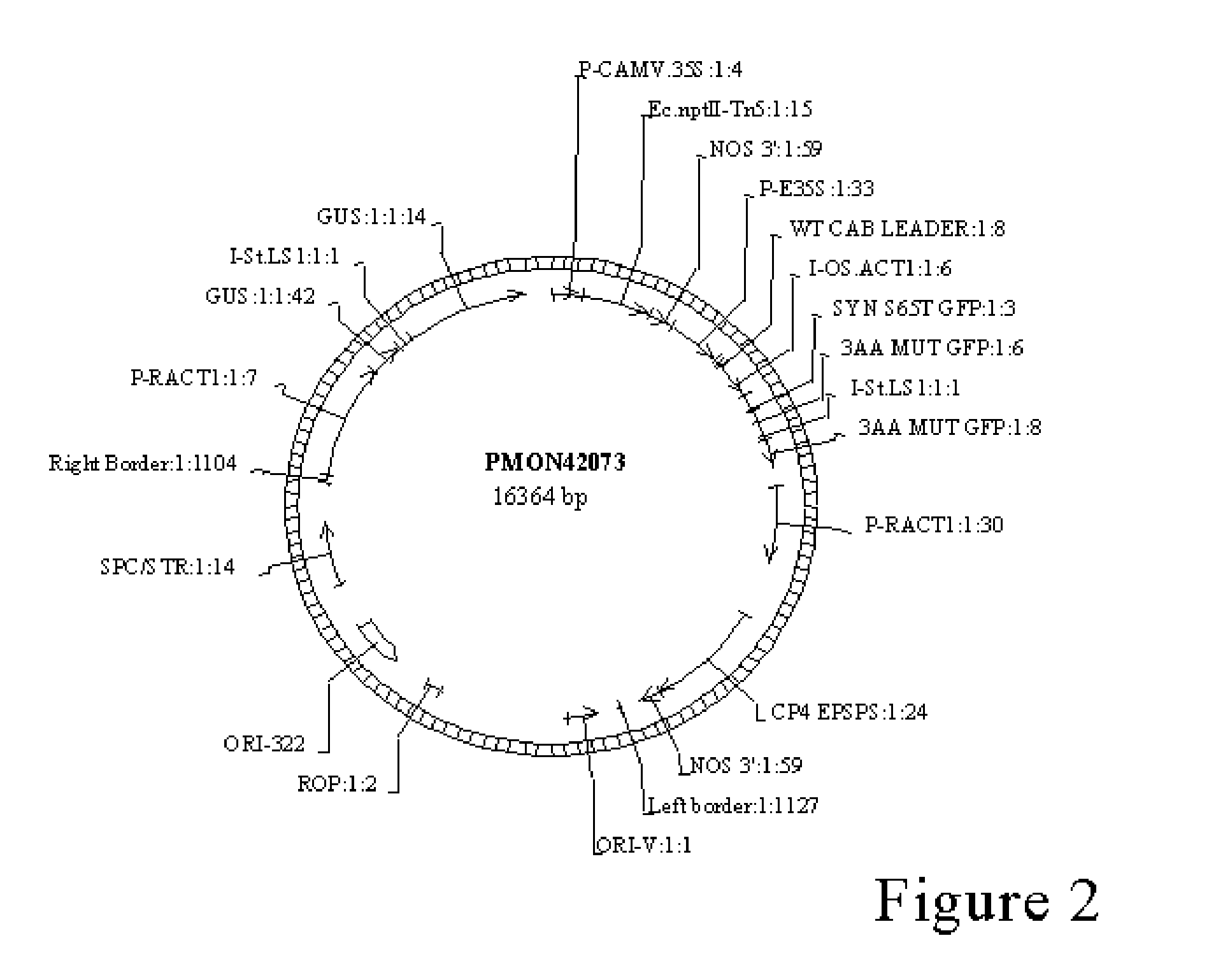A Novel Method for Agrobacterium Transformation for Dihaploid Corn Plants
- Summary
- Abstract
- Description
- Claims
- Application Information
AI Technical Summary
Benefits of technology
Problems solved by technology
Method used
Image
Examples
example 1
[0092] Production of Haploid Seed
[0093] Haploid Embryo Induction
[0094] To produce haploid embryos for tissue culture, corn plants from inbred lines A, B, C or D were pollinated with KHI Select C2pollen in greenhouse. The immature ears were harvested 11 days after pollination. After 1 day at 4° C. in the dark, the immature embryos were removed from the kernels and plated on media 201 W (N6 salts; N6 vitamins, 1 mL / L; glycine, 1 mL / L of 2 mg / mL; 2,4-D, 1 mL / L of 1 mg / mL; casein hydrolysate, 100 mg / L; proline, 2.9 g / L; sucrose, 20 g / L; agar, 2 g / L; AgNO3 3.4 mL / L of 2 mg / mL; pH 5.8). The plates were then incubated in the dark at 28° C.
[0095] Haploid Calli Identification
[0096] Kernels with haploid embryos had normally developing endosperm (3N) and were similar to kernels with diploid embryos. Therefore, kernels with haploid and diploid embryos were indistinguishable based on their shape, size, or appearance. Haploid embryos, however, usually grew more slowly than diploid embryos. Th...
example 2
[0103] Callus Culturing
[0104] Haploid callus from corn line A was induced as described in Example 1 and grown on 201W medium (Table 3) at 28° C. in the dark, transferring to fresh media every 2 weeks.
[0105] Stability Study
[0106] Two plates each of 10 different haploid cultures were cultured separately so flow cytometry analysis could be performed over time to look for spontaneous chromosome doubling in the callus.
[0107] Two plates of 201W, each containing 0.25 g of callus, were made for each of the ten callus types. Every two weeks, a composite sample of callus (3 pieces from different parts of a plate, totaling ˜100 mg) was taken from each plate for flow cytometry analysis.
[0108] When the flow cytometry samples were taken, 0.5 grams of callus from each plate was also transferred to a fresh plate of 201W to continue the stability study. This process was continued every 2 weeks for 2 months.
[0109] In the first 4 weeks of callus growth, the ratio of haploid peak to diploid peak ...
example 3
[0114] Seed Germination
[0115] Seeds of haploid corn line D were kept in a desiccator for 2-24 h with sterilizing gas, which was produced by mixing of 200 mL bleach (5.25 to 6.15% sodium hypochlorite) and 2 mL HCl. (Seeds can also be sterilized in 50% bleach [bleach contains 5.25 to 6.15% sodium hypochlorite] for 20 min and washed with sterile water three times.)
[0116] For germination, the kernels were inserted with the radicle end down into the medium. For germination MSVS34 solid medium was used (Table 4) (MSVS34 medium is CM4C Basal Phytagar medium with 3 mg / L BAP, 10 mg / L picloram and 100 mg / L ascorbic acid). Seeds were incubated in 16-hour day lighting at 28° C. for 7-10 days. On MSVS34 medium, the nodal area was expanded and no roots formed at the nodal region. This area with apical and adventitious meristem usually produced the regenerable callus.
TABLE 3Media used in this inventionComponent½ MS VI½ MS FLMS / BAPMSOD609 RU623Pcom 65201WMS salts2.2g / L2.2g / L4.4g / L4.4g / L4.4g / L4....
PUM
| Property | Measurement | Unit |
|---|---|---|
| Volume | aaaaa | aaaaa |
| Volume | aaaaa | aaaaa |
| Volume | aaaaa | aaaaa |
Abstract
Description
Claims
Application Information
 Login to View More
Login to View More - R&D
- Intellectual Property
- Life Sciences
- Materials
- Tech Scout
- Unparalleled Data Quality
- Higher Quality Content
- 60% Fewer Hallucinations
Browse by: Latest US Patents, China's latest patents, Technical Efficacy Thesaurus, Application Domain, Technology Topic, Popular Technical Reports.
© 2025 PatSnap. All rights reserved.Legal|Privacy policy|Modern Slavery Act Transparency Statement|Sitemap|About US| Contact US: help@patsnap.com



